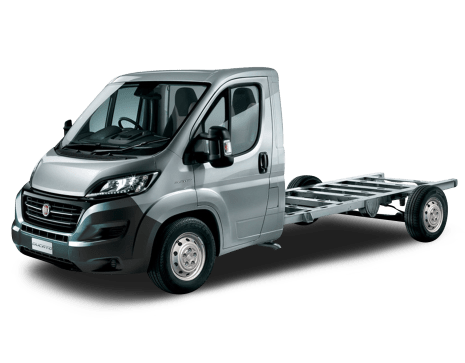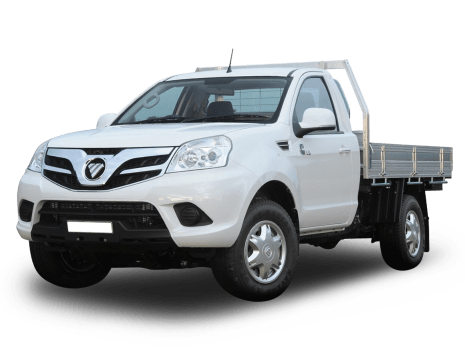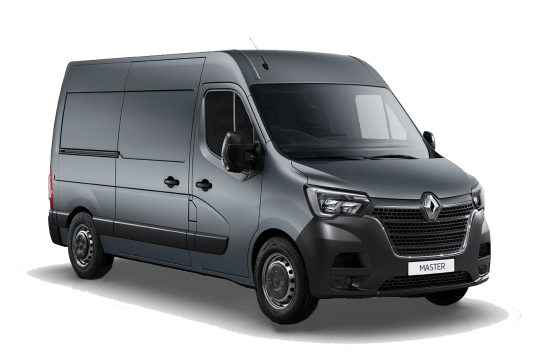
Mitsubishi Triton VS Iveco Daily
Mitsubishi Triton
Likes
Dislikes
Iveco Daily
Likes
- Fuel economy/turning circle
- Cabin comfort/storage
- GVM/GCM ratings
Dislikes
- No driver's left footrest
- Short warranty
- Trans can override manual mode when engine braking
Summary
Mitsubishi Triton
So, you’re looking for a dual-cab ute. You want something that can do it all. Tough, family friendly, and right in the sweet spot when it comes to price.
You’re also looking for something a little different to Australia’s two favourites, the Ford Ranger and Toyota HiLux. Maybe you find them too expensive, maybe you find them too popular, or maybe you find the HiLux too old and the Ranger too digital.
For this test, we’ve grabbed the next two down in terms of popularity. Both are built by Japanese automakers in Thailand, and both have a reputation for being as tough as they come.
Read more about
- Beefed-up ute approved for Australia: Isuzu D-Max Blade gets Walkinshaw treatment to take on the Toyota HiLux GR Sport, Nissan Navara Warrior and maybe even Ford Ranger Raptor
- Iconic badges to return? Mitsubishi Lancer and Montero nameplates trademarked in the US suggest Nissan Patrol twinned Pajero and Nissan Leaf relation are coming
- Will the new 2025 Kia Tasman ute be a hit? We examine whether newcomers such as the BYD Shark plug-in hybrid ute can match the might of the Ford Ranger and Toyota HiLux | Analysis
On the one hand, we’ve got the new-generation Mitsubishi Triton in GLS form, and on the other, we’ve got the facelifted Isuzu D-Max in LS-U+ form. Both are well-equipped dual-cabs in 4x4 form which sit second from the top of their respective ranges.
Will we be able to crown one a winner for work, play, and family duties? Read on to find out.
| Safety rating | |
|---|---|
| Engine Type | 3.0L turbo |
| Fuel Type | Diesel |
| Fuel Efficiency | 8L/100km |
| Seating | 5 seats |
Iveco Daily
For many tradies a one tonne cab-chassis ute will do the job. However, if you need much greater load space and much higher GVM and GCM ratings, the obvious solution is to upgrade to a cab-chassis that competes in the Light Duty (3501-8000kg GVM) segment of the Heavy Commercial vehicle market.
One of many competitors in that space is Italian truck manufacturer Iveco with its Daily E6 range. We recently put one of its latest cab-chassis models to the test, which with a 4495kg GVM rating can conveniently be driven with a normal car licence.
| Safety rating | — |
|---|---|
| Engine Type | 3.0L |
| Fuel Type | Diesel |
| Fuel Efficiency | 10.9L/100km |
| Seating | 3 seats |
Verdict
Mitsubishi Triton/10
It’s a tough test for two tough utes, which are more evenly matched than we first expected. It’s clear both also make great alternatives to the HiLux or Ranger.
The Triton’s asking price is more affordable. It has solid ownership terms as well as a sleek, modern, and spacious cabin. It also has a higher payload and a handful of additional safety kit. On value (and our scoring system) alone, it’s hard not to award it the win.
However, this doesn’t make the D-Max a loser by any stretch. It impressed in areas I didn’t expect. Its cabin is more comfortable even though it doesn’t feel as big. It boasts a better ride quality and faster, smoother power delivery when compared to the Triton. After our rigorous testing, it was the ute I subjectively preferred driving home in at the end of the day.
| Triton GLS 4x4 | D-Max LS-U+ 4x4 |
Price and specs | 8 | 7 |
Practicality | 8 | 7 |
Design | 8 | 7 |
Engine and transmission | 7 | 8 |
Fuel consumption | 7 | 7 |
Driving | 7 | 8 |
Safety | 9 | 8 |
Ownership | 9 | 8 |
Final score | 7.9 | 7.5 |
Iveco Daily8/10
This workhorse combines good cabin comfort and storage with an expansive tray (or other service body if you prefer) and GVM/GCM ratings large enough to cater for a multitude of heavy work requirements. It would be worthy of consideration if you have a car licence and need more than a one-tonne ute or full-size US pickup to get the job done.
Design
Mitsubishi Triton
Both versions of these utes arrived this year, one a new-generation, the other a facelift.
We’re straying into subjective territory as always with design, but to me the Triton gets an advantage. Clearly its latest generation has been cause for a blank canvas redesign, and the result is a much more contemporary looking vehicle from the outside.
Its light profile, imposing width and wheel stance, as well as its tidy body panels make it stand out from the crowd, particularly at its price point. Sure, it doesn’t have the brash American appeal of the Ranger, but it looks more modern than the facelifted D-Max on this test at any rate.
On the inside it continues its modern look and feel, and also features plenty of clever little design touches to push Mitsubishi’s diamond theme. This is reflected in surprising places, like the knurling on the volume dial or reflected in the headrests of the seats. The cabin feels spacious and wide, and is brightened up a bit with a tasteful smatter of silver in the cool bar-style vents. It also features bright and sharp screens with decent if uninspired software.
Meanwhile the D-Max stays the course for this update with a slightly more aggressive treatment in its grille and rear light clusters. Its overall visage is one of a conservative ute which plays it quite safe in terms of design queues. It does keep with the tough reputation of the D-Max badge, but in my opinion runs the risk of feeling a little dated with so many newer-looking options on the market, ranging from its Triton rival here to the Ranger and VW Amarok.
This tough but rugged theme continues on the inside, with a few redeeming features that may surprise you. On the whole it’s a bit of a greyscale space with plenty of hard plastics, but there are soft-touch surfaces in all the right places which offer a bit more sponge than those in the Triton. It also manages to maintain Isuzu’s current hexagonal design motif, which is reflected in the wheel, buttons, dash cluster and even the seats.
For this update the D-Max also has an improved software suite, although it’s still a bit clumsy in terms of its layout compared to the simple menus in the Triton.
Which seats are better for spending time in? Despite its more rugged appeal, I was surprised to find the D-Max had the better of the two seats simply because you sink into them more. Even the leather trim on its steering wheel is softer and nicer to hold.
Do we have a winner? Despite the D-Max proving to be quite comfortable, in terms of aesthetics and providing a modern, spacious cabin, it’s the Triton.
Iveco Daily
The latest Daily E6 range features a revised and more streamlined grille design with more prominent horizontal louvres.
It has also switched from hydraulic to electric power-steering, bringing numerous benefits including steering wheel height/reach adjustment and the new ‘City Mode'.
The latter allows the driver to reduce low-speed steering effort by up to 70 per cent when negotiating tight worksites or loading zones. A welcome feature that allows turning with one or two fingers.
Iveco claims catering for big Aussies was of primary importance when refining its driver seating comfort which includes a taller headrest, longer seatbelts and seat-rails for greater adjustability, plus what it claims to be the first use of memory foam in commercial vehicles.
The only thing missing for RHD markets like Australia is a driver's left footrest, even though LHD markets get them as evidenced by the one residing in the passenger footwell, which is of course the driver's footwell in LHD models.
Passenger seating is often overlooked in single-cab designs but our test vehicle is unusually comfortable, particularly in the central position where even tall people can sit with sufficient knee clearance from the dash and with ample room for large boots on a flat floor.
The steel ladder-frame chassis rides on torsion-bar independent front suspension and a live rear axle, located by substantial double-stacked leaf-spring packs.
Braking is by four-wheel discs and it has a compact 13.5-metre turning circle, which certainly takes the stress out of U-turns, particularly at busy intersections.
The front bumper and lower sections of the doors, where most bumps and scrapes occur, have a low maintenance dark grey finish.
The bumper is now made in three pieces to minimise repair costs, as each section can be replaced independently if damaged rather than having to replace the entire unit.
Practicality
Mitsubishi Triton
Dimensionally, the Triton is longer and taller but slightly narrower than the D-Max (although, it does not feel it), while the D-Max actually gets a longer but much narrower tray. See the full dimensions in our table below.
In terms of storage and adjustability in the cab these two are quite evenly matched. Both offer eight-way power adjust seats in the spec tested, and both offer telescopic adjust for the steering column. Both get large bottle holders in the doors and in the centre console, although without adjustable ridges, neither are perfect when it comes to holding different sized bottles.
Only the Triton scores a wireless charging bay below its climate controls, while it also offers a larger centre console box.
Both have easily adjustable screens with the new-generation Triton committing nicely to dials for tuning and volume, and the D-Max notably re-introducing them for this update. Again, the Triton’s software is more simply laid out, and its screens are brighter and sharper than the units in the D-Max.
Both cars score an array of easy-access toggles on a dedicated climate panel, saving you the need to negotiate with touchscreen menus, so they’re evenly matched on that front.
The rear seat is differentiated mainly by the additional width seemingly on offer in the Triton, which feels as though it could seat an adult in the middle position in relative comfort. It scores bottle holders in the doors and drop-down armrest, as well as two USB-A ports on the back of the centre console and adjustable air vents in the roof. Additionally, the Triton gets a clever set of pockets on the back of the passenger seat suited to various device sizes. I fit quite comfortably behind my own 182cm tall driving position in the Triton, although I did feel as though I was seated very far off the ground.
Meanwhile the D-Max’s rear seat offers the same spongy seat trim as in the front seats, although overall it feels narrower than the Triton. It, too, scores bottle holders in the doors and two additional small ones in the drop-down armrest, although it only offers a single USB-C outlet on the back of the centre console. There are also two adjustable air vents down there. And an odd little storage tray. Unlike the Triton, the D-Max comes with a bonus coat hook on the back of the front seat. It feels as though I have slightly less room in the D-Max, but it is still sufficient and just as comfortable.
The Triton has a noticeably larger tray than the D-Max. See the full figures in the table below, but the core part of the story is the Triton’s tray is much wider and offers more useful space between the arches, while the D-Max’ tray turns out to be slightly longer. Both come from the factory in this spec fitted with a plastic tub-liner, but neither come with a roller cover unless you delve into the options list.
Payload is nearly 100kg higher in the Triton compared to the D-Max, although both utes share the same rated towing capacity at 750kg unbraked and 3500kg braked. The Triton gets an alloy spare while the D-Max gets a steel spare.
Off-road prowess was not the focus of this Tradie Guide review, but if you’re curious to see the technical figures, they’re in the spec table below.
Do we have a practicality winner? Seems like the Triton gets ahead here slightly with its higher payload, wider tray, and more spacious-feeling cabin.
| Triton GLS 4x4 | MU-X LS-U+ 4x4 |
L x W x H | 5320mm x 1865mm x 1795mm | 5285mm x 1870mm x 1790mm |
Kerb weight | 2125kg | 2110kg |
Payload | 1075kg | 990kg |
Towing capacity b/ub | 750kg/3500kg | 750kg/3500kg |
Tub capacity L x W x H | 1555mm x 1545mm x 525mm | 1570mm x 1530mm x 490mm |
Tub Width between arches | 1135mm | 1122mm |
Spare | Full-size alloy | Full-size steel |
Tub liner | Y | Y |
Tonneau cover | N | N (ours fitted with a manual roller $3521.76) |
Off-Road
| Triton GLS 4x4 | D-Max LS-U+ 4x4 |
Clearance | 228mm | 240mm |
Approach | 30.4 degrees | 30.5 degrees |
Departure | 22.8 degrees | 19 degrees |
Breakover | 23.4 degrees | 23.8 degrees |
Iveco Daily
With its 2135kg tare weight and 4495kg GVM, our test vehicle offers a substantial 2360kg payload rating, which is about double that of the sturdiest one-tonne cab-chassis models.
Even after you deduct the 304kg weight of its aftermarket aluminium tray from that figure, you're still left with 2056kg or more than two tonnes of payload capacity.
It's also rated to tow up to 3500kg of braked trailer and with its 7995kg GCM that means it can legally tow its maximum trailer weight while carrying its maximum GVM.
In other words, this jigger can legally haul just under 8.0 tonnes of combined payload and trailer, which opens the door to many working tasks requiring big load capacities.
The aluminium tray has a sturdy bulkhead with rear window protection and pivoting load retainers up top to ‘book-end' long lengths of pipe or timber.
It also has side-steps up front plus external rope-rails and internal load-anchorage points along each side.
There are two drop-sides along each flank separated by short and sturdy pillars to boost strength and rigidity.
According to our tape measure, this tray's internal work surface is 4070mm long and 2055mm wide with a drop-side depth of 330mm.
There are plenty of places to store things in the cabin starting with three tiers of storage in each door, with the largest equipped with small and large bottle-holders. There's also a full-width shelf at roof height.
The top of the dash has two large bins with clamshell lids, plus a central bin with two USB ports. There's also cup/small-bottle holders on each side of the dash and an open shelf and small glove box on the passenger side.
In the central dash there's a pop-out cupholder, shallow drawer for small items and a larger swing-open bin below them.
The centre seat's backrest folds forward and flat to provide a small work desk complete with a spring-loaded document clamp.
This desk can be raised to reveal a padded compartment below that's ideal for storing pens and slender electronic devices (phones, iPads etc).
Both base cushions in the passenger seat can also be tilted forward to access a large hidden area beneath, so there's good use of limited cabin space to maximise storage.
Price and features
Mitsubishi Triton
First up, let’s talk price-tags. Usually, if you want all the luxuries without spending too much, this second-from-the-top variant is where it’s at, and our two competitors here are very closely matched.
Straight away, the Mitsubishi Triton GLS appears to get a clear advantage. At $59,090 before on-roads, it’s nearly $6000 more affordable than than its D-Max LS-U+ rival here, although to make it match spec-for-spec, you need to add $1580 to its price-tag for the Deluxe Pack which adds things like leather seat trim, heating, and power adjust for the driver.
Meanwhile, the D-Max LS-U+ needs no extras added, but is significantly more expensive, starting at $65,500. Our test example also had a manual roller cover fitted, which adds a further $3521.76 to the price, but doesn’t affect the outcome here as the Triton doesn’t get one as standard anyway.
Both of our utes here score 18-inch alloy wheels clad in highway terrain tyres (on the spec sheet, our test Triton had all-terrains for some reason), LED headlights, 9.0-inch multimedia touchscreens, 7.0-inch digital instrument elements, keyless entry with push-start, dual-zone climate, and side-steps.
Both get wireless Apple CarPlay connectivity, but only the D-Max gets wireless Android Auto (it’s wired in the Triton), however, the Triton hits back with its wireless phone charger which is missing from the D-Max. The D-Max also gets auto walk-away locking, but misses out on the auto folding mirrors the Triton gets. Technically, the D-Max has more speakers, but the Triton’s audio system sounded better.
Check out the table below for the full specs laid out neat and tidy.
In terms of which one is a winner here? They’re such a close match it’s too close to call on features alone, but the Triton’s price advantage, even with the Deluxe Pack, is hard to ignore.
| Triton GLS 4x4 (Deluxe Pack) | D-Max LS-U+ 4x4 |
Price (MSRP) | $59,090 (+1580) | $65,500 |
Wheel size | 18-inch alloy | 18-inch alloy |
Tyre | Maxxis A/T | Bridgestone H/T |
LED headlights | Y | Y |
Multimedia screen | 9.0 inches | 9.0-inches |
Apple CarPlay/Android Auto | Wireless CarPlay, wired Android Auto | Wireless CarPlay and Android auto |
Wireless phone charger | Y | N |
Digital dash | No (7.0-inch info display) | Partial (7.0-inch centre) |
Seat trim | Leather (Deluxe Pack) | Leather |
Speakers | 6 | 8 |
Climate | Dual-zone | Dual-zone |
Power adjust | Driver (8-way - Deluxe Pack) | Driver (8-way) |
Heated seats | Front (Deluxe Pack) | Front |
Connectivity 1st row | USB-C, USB-A, 12v | 2x USB-C, 1x USB-A (Dashcam), 12v |
Connectivity 2nd row | 2x USB-A | 1 x USB-C |
Rear air vents | Y (roof) | Y (console) |
Keyless entry and push-start | Y | Y |
Sidesteps | Y | Y |
Auto walk-away lock | N | Y |
Auto-folding wing mirrors | Y | N |
Built | Thailand | Thailand |
Iveco Daily
Our test vehicle is the 50C single cab-chassis equipped with the standard 3.0-litre four-cylinder turbo-diesel, optional eight-speed automatic transmission and 3750mm wheelbase (one of five wheelbases to choose from) for a list price of $70,639, plus on-road costs.
Our example is equipped with the 'Hi-Business Pack' (one of four optional upgrade packs) which consists of the 'Hi-Connect' multimedia system with GPS navigation, wireless and USB phone-charging, fog lights and full LED headlights. So, drive-away price (not including tray) is $73,364.
For that money you get a workhorse that's well equipped for hard yakka, starting with its six rugged steel wheels (duals at the rear) with 195/75 R16 truck tyres and a full-size spare.
The single-cab has a suspended, heated and fully adjustable driver's seat with fold-down inboard armrest plus a two-passenger bench seat, adaptive cruise control, heated and power-adjustable door mirrors with direction indicators, electronic parking brake, daytime running lights, 3.5-inch driver's info display and four-speaker multimedia with multiple connectivity including Apple and Android devices.
There's also plenty of cabin storage and connections are provided to facilitate the installation of service bodies.
Under the bonnet
Mitsubishi Triton
Our utes again seem quite evenly matched. Both have diesel engines, both have a six-speed automatic transmission, both have 4x4 capability with low-range transfer cases, and both have locking rear differentials. One, however, comes out on top when it comes to pure numbers.
The Triton uses an upgraded version of the engine used in the previous-generation truck. It still measures 2.4-litres of capacity across four cylinders, but is now twin-turbocharged. Total power comes to 150kW/470Nm and peak torque arrives from 1500rpm.
Meanwhile, the D-Max continues to employ its renowned 3.0-litre four-cylinder single-turbo engine from the brand’s light-duty commercial range, producing a sturdy 140kW/450Nm. Peak torque arrives from 1600rpm.
A winner? The Triton’s additional power is backed by a higher payload, so we’re inclined to hand the win to it, although there’s more to the story in the driving and load test section of this review.
| Triton GLS 4x4 | D-Max LS-U+ 4x4 |
Capacity | 2442cc | 2999cc |
Cylinders | 4 | 4 |
Turbo | Twin | Single |
Power | 150kW | 140kW |
Torque | 470Nm | 450Nm |
Transmission | Six-speed | Six-speed |
Diff locks | Rear | Rear |
Iveco Daily
Iveco's 180EVID F1C is a heavy-duty 3.0-litre, four-cylinder turbo-diesel with variable geometry turbine technology and tough Euro 6 emissions compliance using AdBlue.
It produces 132kW at 3500rpm and 430Nm of torque at 1500rpm.
The optional ZF eight-speed torque converter automatic sends drive to the rear wheels and offers a choice of 'Eco' (Economy) and 'Power' drive modes plus the option of sequential manual-shifting, all using the stumpy dash-mounted shifter.
It also has overdrive on its seventh and eight ratios to optimise fuel economy, particularly at highway speeds.
Efficiency
Mitsubishi Triton
We ran a distance-controlled fuel test on both vehicles in the kinds of conditions we reckon tradies will drive them in. This included about 65km straight through the middle of Sydney on expressways and high-traffic urban roads, then about 55km as part of a return journey on the freeway.
The results were interesting because both vehicles were very close but used less fuel than the official claim, check the table below for details.
Both can claim nearly 1000km on the official consumption numbers, and neither is a hero when it comes to carbon emissions - check the figures out in the table below. Only the Triton requires AdBlue which will occasionally need to be topped up.
| Triton GLS 4x4 | D-Max LS-U+ 4x4 |
Diesel consumption (official/combined) | 7.7L/100km | 8.0L/100km |
Diesel consumption (on-test) | 7.9L/100km | 7.8L/100km |
Fuel tank | 75L | 76L |
Est. driving range | 974km | 950km |
C02 | 203g/km | 207g/km |
AdBlue | Y | N |
Iveco Daily
When we stopped to refuel at the completion of our 303km test, the dash display was claiming average consumption of 11.3L/100km, of which about one third of that distance was hauling a heavy payload on a mix of city and suburban roads plus some highway travel.
Our own number, crunched from fuel bowser and trip meter readings, came in slightly lower at 10.9, which is excellent economy for a vehicle weighing more than 2.4 tonnes unladen and almost 4.0 tonnes for part of our test.
So, based on our figures, you could expect a realistic driving range of around 900km from its 100-litre tank.
Driving
Mitsubishi Triton
Both utes on this test provide a very competent and nearly SUV-like experience, and while you can do even better in this segment with the likes of the Ford Ranger or Volkswagen Amarok, these two are very evenly matched. Still, there are some subtleties that may affect your choice.
Triton unladen driving
Starting with the Triton, and straight away you notice its excellent visibility and commanding driving position. The modern feel for the cabin is reflected in the driving experience thanks to a tidy layout, easy operation of screens and dials, and relatively straightforward software.
The steering is notably heavier in the Triton and it takes more effort to drive over longer periods of time, as a result it can be more fatiguing. It does lend itself to plenty of feel in the corners and on uneven terrain, however.
The ride is also firmer in the Triton. It can deal with undulations and larger bumps quite well, but smaller, sharper road imperfections were communicated to the cabin. On the other hand, the cabin feels overall more refined, with not as much road and engine noise making its way inside. The wider track on this new-generation version offered plenty of stability and confidence in the corners.
When it comes to deploying power the Triton certainly feels as strong as a dual-cab should, although a slight moment of additional lag required to actually get the power to the wheels was notable, even though technically peak torque arrives at lower rpm in the Triton. It leaves a feeling of the Triton needing to work harder than its rival despite its higher outputs on paper.
While the six-speed auto was also mostly as smooth as it should be, it can get caught off guard and take a moment to change up or down.
The safety systems in the Triton are reasonably well tuned. The example we tested scored a software update Mitsubishi deployed to address issues it had from the launch with an over-active driver monitoring suite. The result is good, with the system being mostly hands off. The tech was a bit confused by the use of sunglasses, however.
Its lane keep software was also more aggressive than the system in the D-Max on the rare occasion it intervened. These kinds of issues are quite common on modern SUVs and passenger vehicles, and as a symptom of being one of the first utes to fully deploy them, the Triton’s systems are a little imperfect.
On the whole we like the Triton. It’s a very modern drive experience, although it was interesting to find some parts aren't as smooth or seamless as its rival in this test.
D-Max unladen driving
The D-Max feels a bit more closed in than its Triton rival here in the cabin, with loads of dark trim and slightly more limited visibility out the rear compared to the Triton. It does have massive wing mirrors which offer a wide view of neighbouring lanes.
Somewhat frustratingly, the screens (both in the dash and multimedia screen) appear more dull than the ones in the Triton and more susceptible to glare. The software is better than the pre-facelift model and it’s faster, but still a bit clumsily laid out.
The D-Max starts to impress as soon as you set off, however. Its steering is much lighter than the Triton, but manages to maintain enough feel in the corners to imbue the driver with confidence.
The ride is also excellent. It’s comfortable and compliant over most bumps and imperfections, while maintains control without being bouncy. It has an element of the ladder chassis jiggle common among ladder frame vehicles, but hides it well.
The D-Max’ 4JJ3 3.0-litre engine is renowned for being simple and powerful, and this is especially clear when compared to its technically more powerful rival.
It feels as though the power is delivered more quickly and more smoothly than the Triton. The six-speed unit in the D-Max is slick and straightforward and seemingly never caught off-guard. Perhaps the only area where the D-Max trails the Triton in this respect is the amount of noise the physically larger engine generates. Cabin ambiance isn’t quite as nice in the D-Max generally.
Safety systems are also seemingly better tuned. Not a single safety system interfered with the drive experience in our entire time with the D-Max, which speaks well to those who like to be in full control.
To sum the D-Max up, it does almost everything when it comes to driving slightly better than the Triton. On top of this, its light steering and softer seats will leave you less fatigued at the end of the day.
Load test
While we didn’t take our utes off-road for this review, we did load their trays up to see how they would handle work duties. Our new friends at BC Sands in Sydney’s Taren Point helped us out by lending us 500kg of firewood and some of their expert forklift operators to make this test possible, check them out here.
In total we had 500kg of firewood in the tray and two occupants in the cab for about 660kg on board of both vehicles. From there we took them on the same 13km loop which involved roundabouts, T-junctions, speed bumps, downhill and uphill stints as well as a brief jaunt on a multi-lane expressway.
First we loaded up the D-Max. Its narrower tray made it harder for the forklift operator to drop the bag of wood in, and once loaded its suspension compressed a significant amount.
The edges of its tray proved useful for mounting ratchet straps, although it is notable how limiting the smaller distance between the wheel arches is and the amount of space the manual roller cover takes up. Our total 660kg load is about two-thirds of the D-Max’ total permissible 990kg.
With the weight in the tray, the D-Max was initially unsettling, but confidence grew. This is because its big engine barely feels the additional weight and the suspension is capable enough to handle the mass despite the initial compression. While the softness feels like it requires caution in the corners, it handles additional compression from speed bumps, road imperfections and hills in its stride, with no secondary bouncing and a good amount of remaining ride comfort. The steering feels only slightly heavier with the additional weight.
After our short stint, the D-Max consumed 11.9L/100km according to its computer, which is reasonable.
Next up, we loaded the Triton. Its firmer springs did not compress as much as the D-Max, and the additional width in its tray made it significantly easier for the forklift operator to drop the bag of firewood in the tray.
The Triton seems more confident in its footing initially, with less compression and the additional track width making it feel as though it would be better than the D-Max. However, things changed as we drove it.
The Triton’s engine also barely feels the additional load, but does need to rev a smidge more. The transmission mostly copes well, although the odd occasion where it's caught out for a moment when changing up or down is more noticeable. The steering, which was already firm, remains unchanged.
The biggest issue the Triton faces is its suspension. With the additional load over the rear axle, large bumps cause a pogo effect with two or three secondary bounces after the initial compression. This particularly gnarly trait is what set it apart from the comparatively smoother D-Max.
The Triton claimed to use slightly less fuel than the D-Max under load on our short route, at 11.1L/100km.
Iveco Daily
It's easy to find a comfortable driving position given the memory foam bucket seat has adjustments for lumbar support, base-cushion rake and driver weight for its inbuilt suspension.
The fold-down inboard armrest, in partnership with the door's armrest, ensures balanced elbow support to reduce neck and shoulder strain.
There are good eyelines to the big door mirrors, with the bottom thirds of each offering wide-angle views. However, with the seat in its most rearward position, the slim column that separates the fixed and sliding glass in the driver's door slightly obscures the outside edge of the driver's door mirror, which suggests the single-cab has more rearward seat travel than the van version we've previously tested.
The electric power-steering is nicely weighted (particularly the new ‘city mode' in tight spots) and the four-wheel disc brakes have good stopping power.
It's a no-brainer the ride quality is harsh over bumps when unladen, given it's designed to cope with 8.0-tonne GCMs.
Fact is, in a working role, this vehicle would rarely if ever be driven without a substantial load to engage its big rear springs, which we did when forklifting 1.3 tonnes onto the tray. With driver this payload totalled 1.4 tonnes, which was still more than 600kg below its peak rating (with tray).
Even so, it was enough to make the ride much smoother, which is most relevant in this context. The 3.0-litre turbo-diesel maintained good performance hauling this load in city and suburban driving, displaying useful flexibility either side of its 1500rpm torque peak in Eco mode.
We did sample the Power mode, but found the engine was more than capable of handling this task in its economy setting, with the eight-speed auto doing its best work if left alone without the need to manual shift.
The engine only requires 2000rpm to maintain highway speeds, so engine (and tyre) noise is low at 110km/h. The most cabin noise comes from wind-buffeting around the mirrors, bulkhead frame and payload hanging in the breeze.
In Eco mode it performed well on our 13 per cent gradient, 2.0km-long set climb at 60km/h, comfortably hauling this load to the summit in third gear without the need to select Power mode.
Engine-braking on the way down, in a manually-selected second gear, pegged the road speed at 50km/h without the brakes needing to being applied for most of the descent, until it overrode our manual gear selection and shifted up to third when the engine was approaching its 4500rpm redline on overrun.
In our experience, these engine-protecting protocols are common in European commercial vehicles. However, it can spring a surprise if you're leaning on the engine to help restrain a big payload on a steep descent and it suddenly changes up a gear.
Even so, the engine-braking performance was good given its sizeable payload.
Safety
Mitsubishi Triton
Safety equipment is impressive on both utes, which come with near-passenger car levels of active equipment.
Both score the now essential auto emergency braking, lane keep assist, and blind spot monitoring, as well as adaptive cruise control and driver monitoring, however, only the Triton comes with active driver monitoring as standard, and front cross-traffic alert as a no-cost option.
It is worth noting the lane keep software and the driver monitoring equipment in the Triton is significantly more sensitive than the equivalent technologies in the D-Max, and more annoying as a result.
Our Triton has the latest software update designed to abate the driver monitoring issues it had at launch, and while they are mostly addressed, the system still gets confused by sunglasses.
Both cars score reversing cameras and both have an impressive array of eight airbags.
The D-Max is covered by the maximum five-star ANCAP safety rating secured by the pre-facelift model in 2022, while the new-generation Triton only recently secured a maximum five-star ANCAP safety rating in 2024.
| Triton GLS 4x4 | D-Max LS-U+ 4x4 |
AEB | Yes | Yes |
LKAS | Yes | Yes |
BSM | Yes | Yes |
RCTA | Yes | Yes |
FCTA | No-cost option | No |
Adaptive cruise | Yes | Yes |
Driver monitoring | Full monitoring | Attention alert |
TSR | Yes | Yes |
TPMS | Yes | Yes |
Reversing camera | Yes, reverse only | Yes, reverse only |
Airbags | 8 | 8 |
ANCAP | Five stars (2024) | Five stars (2022) |
Iveco Daily
Heavy commercial vehicles are not eligible for ANCAP ratings but the 50C cab-chassis is equipped with numerous standard passive and active safety features including driver, passenger and curtain airbags, AEB, adaptive cruise control, a suite of nine electronic stability programs and more.
Ownership
Mitsubishi Triton
Ownership looks like a clear win to the Triton which is offered with a whopping 10-year and 200,000km warranty (conditional on the servicing being completed with Mitsubishi on time during this period.) It also offers a matching ten years of capped-price servicing (see details in the table below) and four years of roadside assist.
On the other hand, the D-Max shouldn’t be written off as it still offers above par ownership terms.
There’s six years and 150,000km of warranty coverage, five years of fixed-price servicing, and its roadside assist can be extended for up to seven years if you continue to service with Isuzu.
Both utes require servicing once every 12 months or 15,000km, whichever occurs first.
| Triton GLS 4x4 | D-Max LS-U+ 4x4 |
Warranty | 10 years/200,000km | Six years/150,000km |
Fixed price servicing | Ten years | Five years |
Annual cost | $489 (5yrs) | $449 |
Service interval | 12 months/15,000km | 12 months/15,000km |
Roadside assist | Four years | Up to seven years |
Iveco Daily
Standard warranty is three years/200,000km (three years is short) but the option of up to five years/300,000km is available at extra cost.
Scheduled servicing is every 50,000km/12 months whichever occurs first.
Iveco offers a range of maintenance agreements to help owners manage maintenance costs.





























